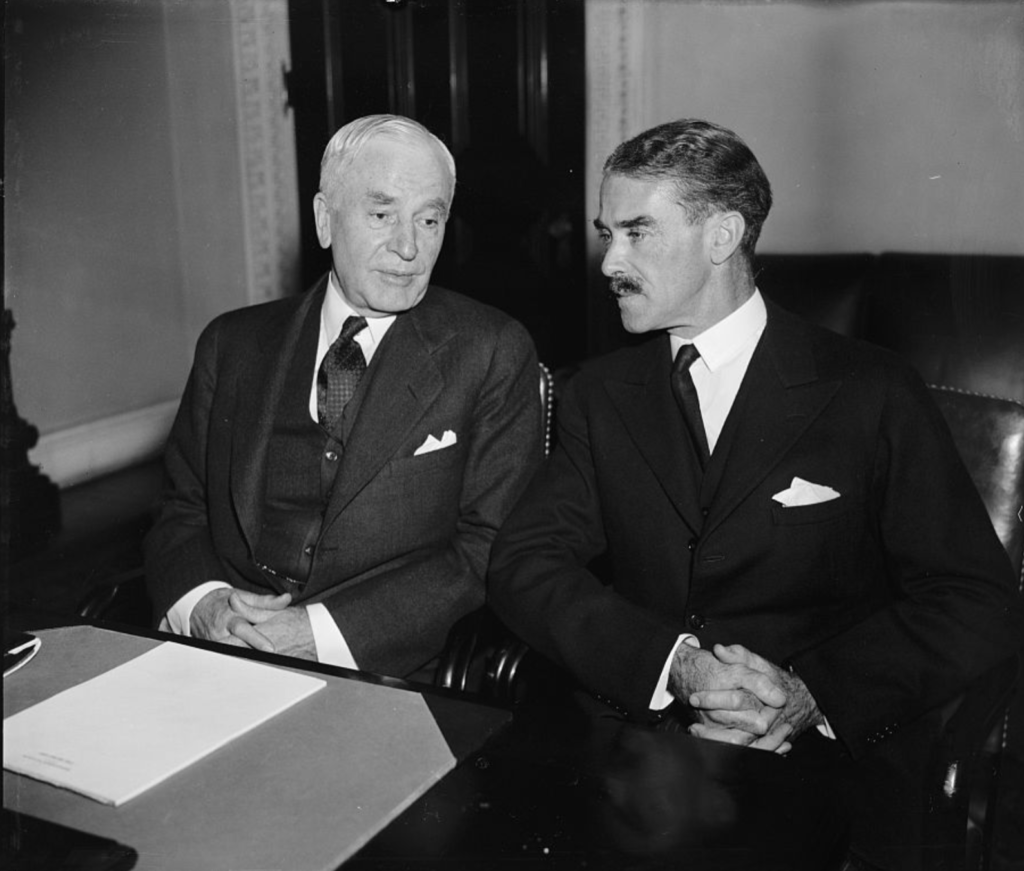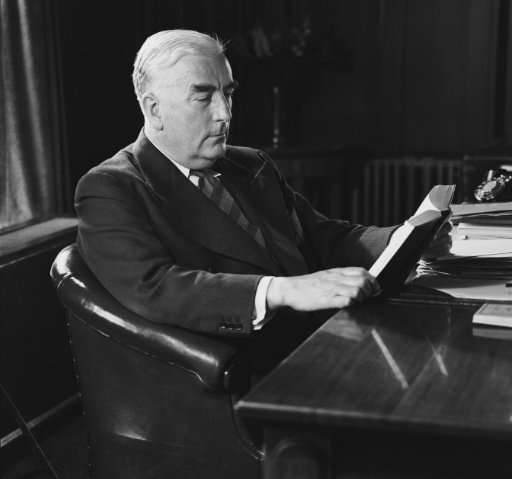On this day, 29 January 1940, Richard Casey is farewelled from Melbourne as he takes up the position of Australia’s first Minister to Washington (what would later be known as Ambassador to the United States). Originally announced on 8 January, the Menzies Government appointment represented the first time that Australia had made a full diplomatic posting outside of the British Commonwealth, a landmark moment in both the development of an independent Australian foreign policy and of Australia’s relationship with the United States.
The appointment was initially intended to be made simultaneously with that of Australia’s first Minister to Tokyo, however this was delayed some months due to international tensions. In 1941 it would be followed by the appointment of Australia’s first Minister to China, meaning that despite often being stereotyped as an ‘Empire man’, it was Robert Menzies who established Australia’s first three non-British diplomatic missions. Menzies explained the decision in a broadcast address to the nation, during which he said:
‘This is the first time that Australia has made a full diplomatic appointment, to a foreign country, and the event is therefore of great historic interest to us. We have for long felt that the problems which concern the nations surrounding the Pacific Ocean are of special and vital interest to Australia and that we might quite reasonably expect to play an effective part in the development and strengthening of peaceful contacts between all the Pacific Powers. By increasing our diplomatic contacts round the Pacific we will be contributing powerfully towards that common understanding without which permanent peace would be impossible.’
This followed an earlier statement in which Menzies had famously said ‘What Great Britain calls the Far East is to us the near north’ – indicating the need for an independent Australian foreign policy in the lead up to war in the Pacific.
The man chosen for the post Richard Casey had long diplomatic experience, having spent much of the 1920s serving as the personal liaison officer of Prime Minister Stanley Bruce in London, before seeing out the 1930s as a minister in the Lyons Government. However, he had only visited the United States twice, and there were some rumours that Menzies was deliberately removing a political rival (though Casey had garnered little support in the leadership ballot which followed Lyons’s death, so he arguably did not constitute much of a threat to Menzies). As a Cambridge graduate who had spent much time in Britain, Casey would pursue what Carl Bridge described as ‘Australian goals within a British world’ – distinct from London but by no means separate from it. Casey had a two-pronged mission:
‘By means of public speaking and press releases, he was expected to create a sympathetic awareness of Australia in isolationist America. And, much more important, he was to make sure that British and American preoccupation with the war in Europe did not lead them to forget to provide properly for the defence of British Pacific territories, foremost among which, of course, was Australia.’
Historians have suggested that he was highly successful at the first part, receiving considerable publicity as he toured America explaining Australia’s similarities with the United States in an attempt to court sympathy. In the latter regard, there was little any individual could do to dissuade Britain and America from agreeing to a ‘Beat Hitler first’ policy, which was adopted in February 1941 before either America or Japan had officially entered the war. Casey did his best to lobby for resources to be dedicated to the ‘Far East’ and made sure the Australian government was informed of decisions being made in Washington, but in trying to actually influence those decisions he faced some frustrating limitations (as has often been the case in Australia’s diplomatic history with the United States).
Nevertheless, there were a number of tangible achievements. One was made with the help of a visit of Menzies himself to Washington in 1941, and this was that Roosevelt ultimately decided against moving a significant proportion of America’s naval fleet from the Pacific to the Atlantic and therefore weakening its deterrent effect on Japan. In the event this was not enough of a deterrent to prevent Japan from entering the war, but it was enough to make Japan think that the United States had to be dealt with, and therefore convinced Japan to engage with America at Pearl Harbour rather than attack only Britain and the Netherland’s Asia-Pacific possessions in the hope that America would remain neutral.
The latter was a nightmare scenario that preoccupied Australian leaders at this time – for all the reliance on the ‘fortress’ of Singapore there was an acute awareness that Australia could only be defended and Japan defeated with American help. In late 1941 Casey made another achievement on this front, obtaining a guarantee of American aid should Japan attack Malaya shortly before the ‘day that will live in infamy’ put all such concerns to bed. Likewise, James Prior’s recent book America Looks to Australia, has argued that Casey played an important role in convincing the US to use Australia as its operational base in the Pacific via personal discussions with General George Marshall – a decision which linked the two nations more intimately than ever before and which almost guaranteed the nation’s security for the duration of the war.
Further Reading:
Peter Mauch, ‘A Completely Star Performance? Australian Minister Richard Gardiner Casey in Washington, March 1940-March 1942’, Journal of American-East Asian Relations, June 2014.
Carl Bridge, ‘R.G. Casey, Australia’s First Washington Legation, and the Origins of the Pacific War, 1940–42’, Australian Journal of Politics & History, Volume 28, Issue 2, Aug 1982.
James Prior, America Looks to Australia: The Hidden Role of Richard Casey in the Creation of the Australia–America Alliance, 1940–1942 (Australian Scholarly Publishing, 2017).
Sign up to our newsletter
Sign up for our monthly newsletter to hear the latest news and receive information about upcoming events.


